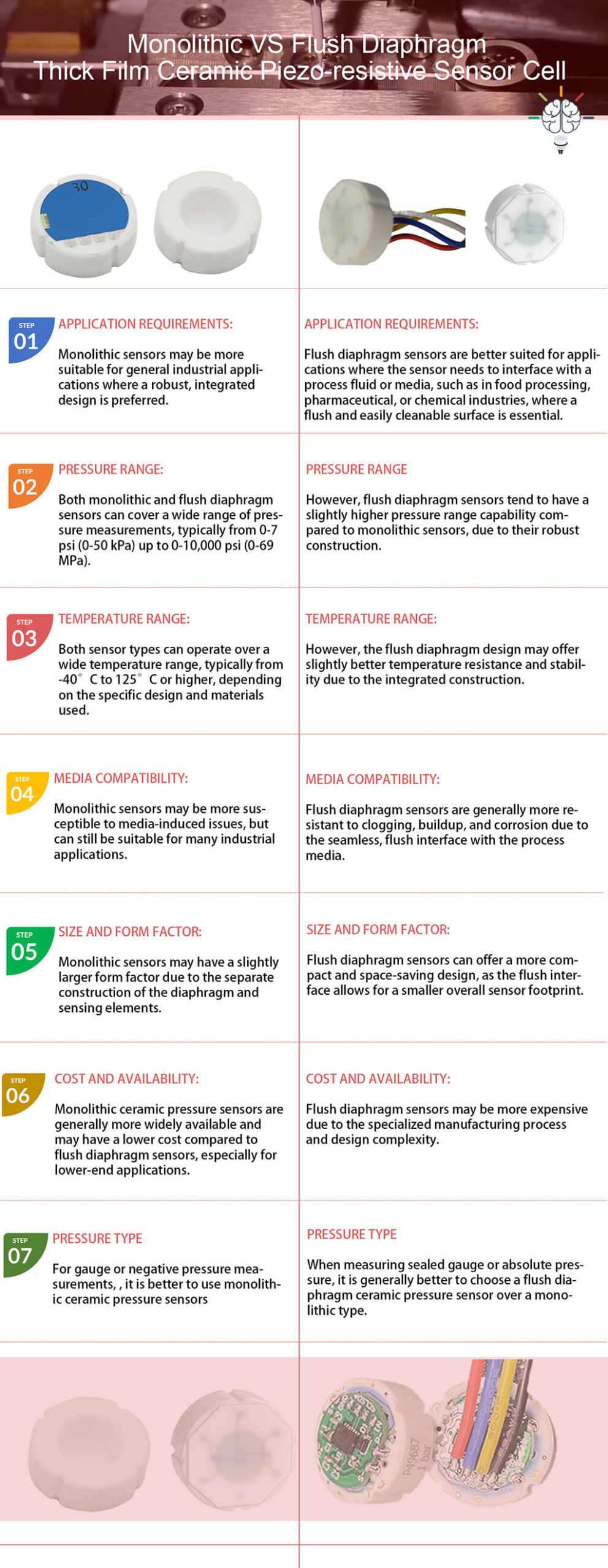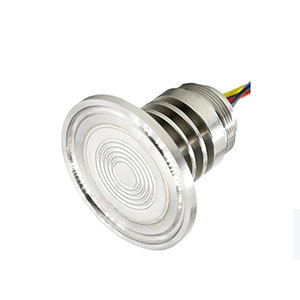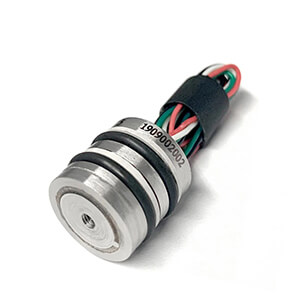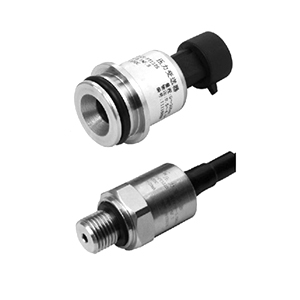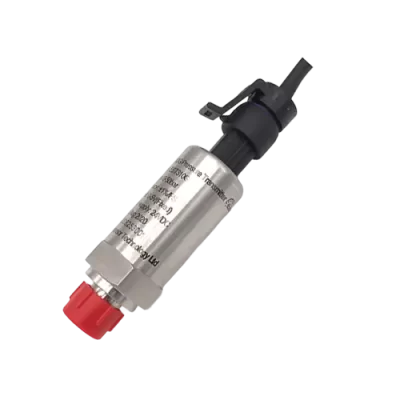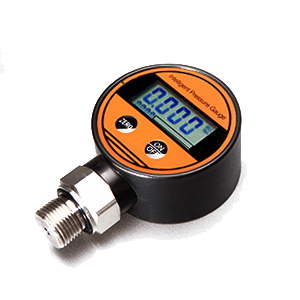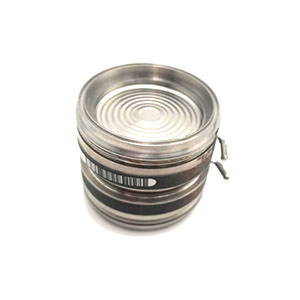When discuss the topic of “how to choose ceramic pressure sensor” for your application, the choice between a monolithic design and a flush diaphragm configuration can have a significant impact on the sensor’s performance, durability, and suitability for your specific needs.
Both types of ceramic pressure sensors offer unique advantages, and understanding the key differences can help you make an informed decision that aligns with your requirements.
In this post, we will explore the critical factors to consider when choosing between monolithic ceramic pressure sensor and flush diaphragm ceramic pressure sensor, providing you with a framework to make the most appropriate selection for your application.
Construction structure & sensing element
Monolithic
In a monolithic ceramic pressure sensor, the sensing elements are directly fabricated onto the ceramic diaphragm.
The key aspects are:
- The sensor has a single, monolithic ceramic structure.
- The sensing element is a thin, ceramic diaphragm, typically made of alumina (Al2O3) or zirconia (ZrO2).
- The ceramic diaphragm typically ranges from 50 to 500 micrometers (μm) in thickness.
- Piezo resistors or strain gauges are directly deposited onto the surface of the ceramic diaphragm using thick-film or thin-film techniques.
- The sensing elements are integrated onto the diaphragm but are not part of the diaphragm itself.
This construction provides a robust and integrated design, where the sensing elements are directly coupled to the deformation of the ceramic diaphragm when pressure is applied.
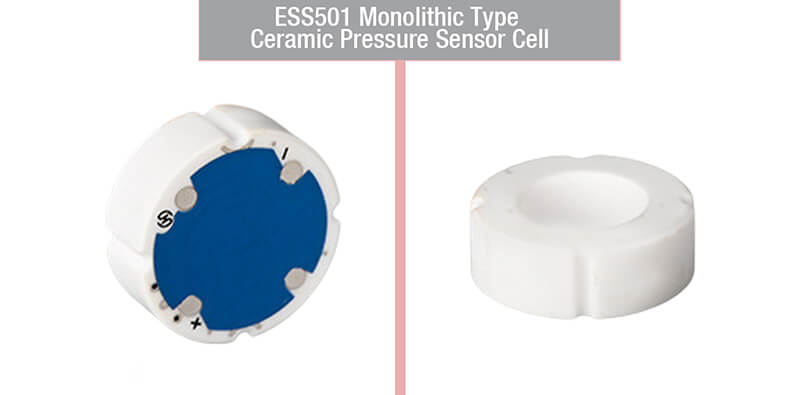
Flush Diaphragm
In a flush diaphragm ceramic pressure sensor, the sensing elements are integrated directly into the ceramic diaphragm itself, creating a seamless interface with the sensor’s housing or surface.
The key aspects are:
- The sensing element is a thin, ceramic diaphragm, typically made of alumina (Al2O3) or zirconia (ZrO2).
- The sensor has a ceramic diaphragm, typically ranging from 50 to 500 micrometers (μm) in thickness, that is flush with the sensor’s housing or surface.
- The pressure-sensing elements, such as piezo resistors or capacitive sensors, are embedded within the ceramic diaphragm itself.
- This integrated design creates a smooth, uninterrupted surface, where the sensing elements are part of the diaphragm.
The flush diaphragm design is advantageous in applications where clogging or buildup of media needs to be avoided, as the seamless interface facilitates easy cleaning and maintenance of the sensor.
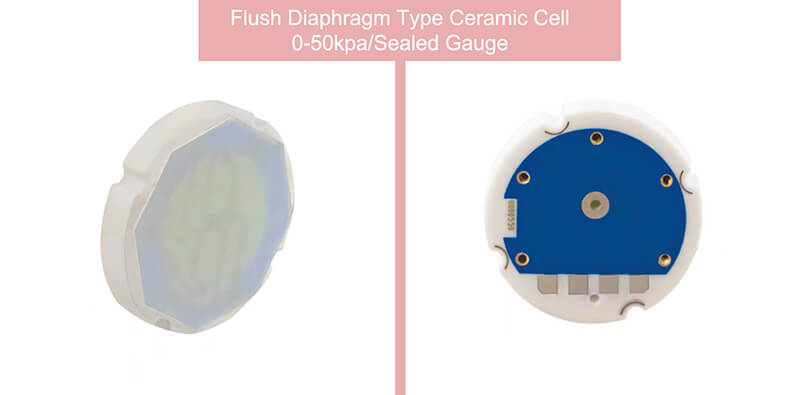
Pressure and range requirements
Another important consideration is the pressure and temperature range requirements.
Both monolithic and flush diaphragm ceramic pressure sensors can cover a wide range of pressure measurements, typically from as low as 0-7 psi (0-50 kPa) up to as high as 0-10,000 psi (0-69 MPa). However, flush diaphragm sensors tend to have a slightly higher pressure range capability compared to monolithic sensors, due to their robust and integrated construction.
Monolithic
- Pressure Range:
- Monolithic ceramic pressure sensors are available for a wide range of pressure measurements, typically from as low as 0-7psi (0-6.9 kPa) up to 0-5,000 psi (0-34.5 MPa).
- The specific pressure range for a monolithic sensor is largely determined by the thickness and design of the ceramic diaphragm.
- Diaphragm Thickness:
- The ceramic diaphragm in a monolithic sensor typically ranges from 50 to 500 micrometers (μm) in thickness.
- Thinner diaphragms, around 50-100 μm, are used for lower pressure ranges, while thicker diaphragms, around 300-500 μm, are used for higher pressure ranges.
- The diaphragm thickness is a critical factor in determining the sensor’s pressure range and sensitivity.
- Sensitivity:
- Thinner diaphragms in monolithic sensors generally exhibit higher sensitivity, as they can undergo greater deformation under the applied pressure.
- This increased sensitivity allows monolithic sensors to accurately measure lower pressure ranges, down to 0-7psi (0-50 kPa).
Flush Diaphragm
- Pressure Range:
- Flush diaphragm ceramic pressure sensors can cover an even wider pressure range, typically from 0-7 psi (0-50 kPa) up to 0-10,000 psi (0-69 MPa).
- The flush diaphragm design, combined with the inherent strength of the ceramic material, enables these sensors to withstand higher pressure levels.
- Diaphragm Thickness:
- The ceramic diaphragm in a flush diaphragm sensor also typically ranges from 50 to 500 micrometers (μm) in thickness.
- However, the flush diaphragm design allows for slightly thinner diaphragms, as the sensor’s housing and construction provide additional support and protection.
- Sensitivity:
- Similar to monolithic sensors, thinner diaphragms in flush diaphragm sensors tend to exhibit higher sensitivity, enabling accurate measurements at lower pressure ranges.
- The flush configuration and integrated design of the sensing elements within the diaphragm also contribute to the sensor’s sensitivity.
When it comes to temperature, both sensor types can operate over a wide range, often from -40°C to 125°C or higher, depending on the specific design and materials used.
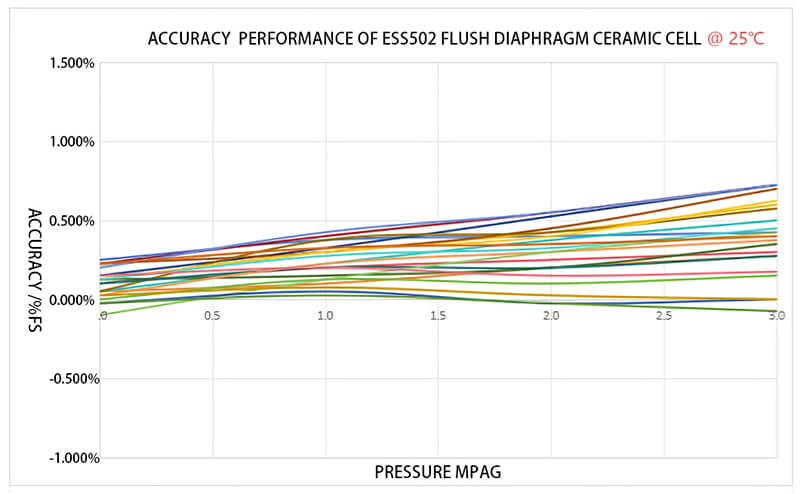
That said, the flush diaphragm configuration may offer slightly better temperature resistance and stability, as the integrated design provides enhanced thermal management properties.
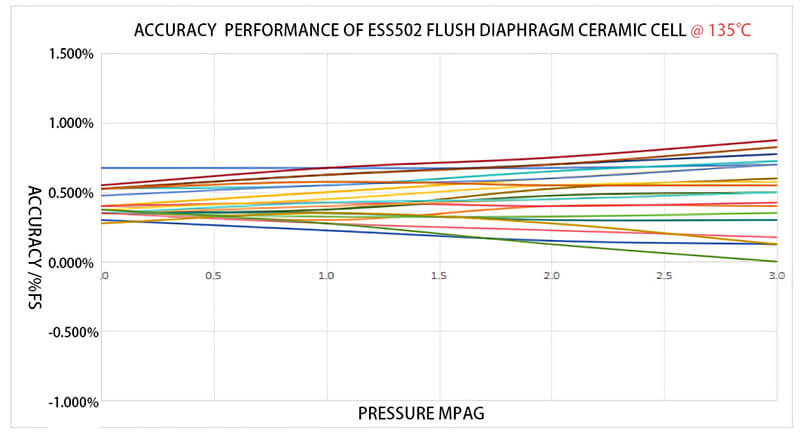
| Technical Characteristics | |
|---|---|
| Parameter | Description |
| Sensor type | Monolithic, Flush diaphragm, Absolute (A), Gauge (R) or Sealed gauge (S) |
| Technology | Ceramic Piezoresistive |
| Diaphragm material | Ceramic Al2O3 96% (standard), 99.6% or sapphire (on request) |
| Weight | ≤ 8g (ceramic cell only) |
| Response time | ≤ 1ms |
| Supply voltage | 2...36Vdc |
| Offset | ‐ 0.1 ± 0.1 mv/v(Other nominal values available on request) |
| Current cons. | ≤ 3mA @ 10V |
| Operating | -40...+85℃ (-40 °F...+185 °F) |
| Storage temperature | -40...+125℃ (-40 °F...+257 °F) |
| Impedance | 11 ± 30%kΩ |
Pressure type
When measuring sealed gauge or absolute pressure, it is generally better to choose a flush diaphragm ceramic pressure sensor over a monolithic type.
Monolithic
- For sealed gauge or absolute pressure measurements, monolithic ceramic sensors would require a sealed and evacuated reference chamber within the sensor housing.
- Maintaining a high-quality vacuum reference can be more complex and potentially prone to degradation over time, which can affect the accuracy and long-term stability of the absolute pressure measurements.
Flush Diaphragm
- Flush diaphragm ceramic sensors can integrate the absolute or sealed pressure sensing elements directly into the ceramic diaphragm.
- This integrated design allows for a more robust and reliable absolute pressure measurement, as the sensing elements are an integral part of the diaphragm, minimizing the potential for leaks or instability in the reference vacuum.
- The flush configuration also provides a more compact and streamlined sensor design, which can be advantageous in applications with limited space.
In both sealed gauge and absolute pressure measurements, the integrated design and flush configuration of the flush diaphragm ceramic pressure sensors can offer several advantages over the monolithic type:
- Improved Stability and Reliability: The integrated sensing elements and robust diaphragm design of flush diaphragm sensors can provide better long-term stability and reliability for sealed or absolute pressure measurements.
- Compact and Space-Saving: The flush diaphragm design allows for a more compact and space-efficient sensor, which can be beneficial in applications with limited available space.
- Enhanced Media Compatibility: The flush diaphragm configuration can also offer better resistance to media-induced issues, such as clogging or buildup, making it more suitable for applications involving harsh or contaminated process fluids.
Media compatibility
Media compatibility is another crucial factor to consider.
It is fact that both types are ceramic based solutions and share the most same characteristic when handle most material however, flush diaphragm ceramic pressure sensors are generally more resistant to clogging, buildup, and corrosion due to their seamless, flush interface with the process media. This makes them particularly well-suited for applications involving harsh or abrasive fluids.
Monolithic sensors, while still suitable for many industrial applications, may be more susceptible to media-induced issues, as the sensing elements are fabricated onto the diaphragm surface rather than being integrated into it.
Dimension and cost requirements
In addition to the application requirements and media compatibility, the size and form factor of the sensor can also play a role in the selection process.
Flush diaphragm ceramic pressure sensors can often offer a more compact and space-saving design compared to monolithic sensors. This is because the flush interface allows for a smaller overall sensor footprint, as the sensing elements are integrated directly into the diaphragm (instead of onto).
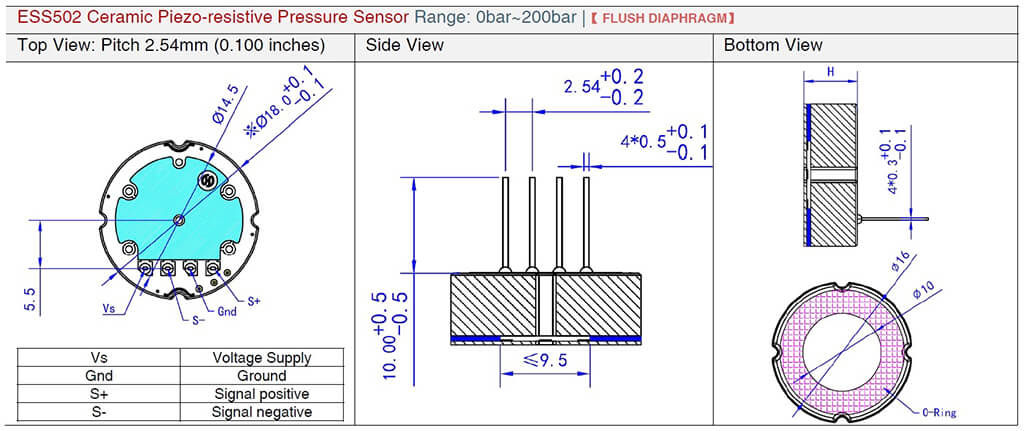
Click to Download Datasheet: ESS502 Flush Diaphragm Ceramic Sensor Cell
Monolithic sensors, on the other hand, may have a slightly larger form factor due to the separate construction of the diaphragm and sensing elements.
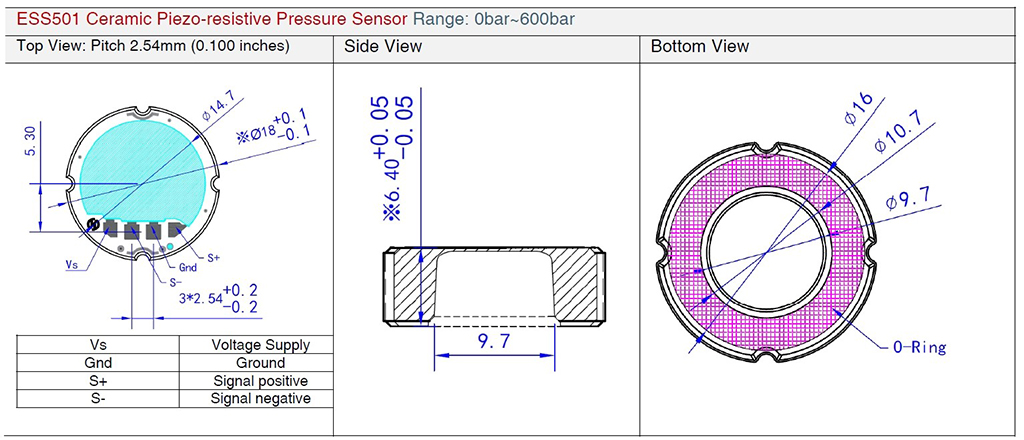
Click to Download Datasheet: ESS501 Monolithic Ceramic Sensor Cell
Finally, cost and availability should also be considered. Monolithic ceramic pressure sensors are generally more widely available and may have a lower cost, especially for lower-end applications. Flush diaphragm sensors, due to their specialized manufacturing process and design complexity, can be more expensive.
However, the enhanced performance and suitability for certain applications may justify the higher cost for specific use cases.
Application and Cost
Application Considerations
Monolithic ceramic pressure sensors are well-suited for general industrial applications where a robust, integrated design is preferred. These sensors feature a single, unified ceramic structure with the sensing elements directly fabricated onto the diaphragm, providing excellent mechanical stability and resistance to harsh environments.
Monolithic sensors are commonly used in applications such as pneumatic systems, hydraulic equipment, and general process control.
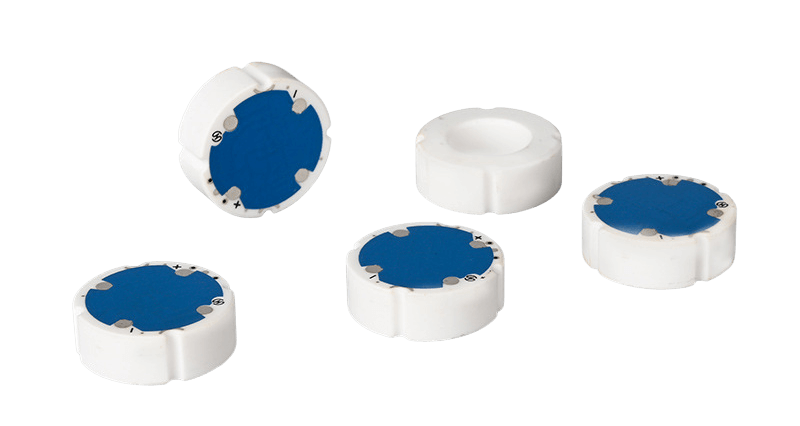
On the other hand, flush diaphragm ceramic pressure sensors are better suited for applications where the sensor needs to interface with a process fluid or media, such as in the food processing, pharmaceutical, or chemical industries.
The flush diaphragm design creates a seamless, uninterrupted surface that facilitates easy cleaning and prevents clogging or buildup of the media, making it the preferred choice for these types of applications. Flush diaphragm sensors are commonly used in applications involving corrosive liquids, slurries, or other aggressive media where a clean and easily maintainable sensor interface is required.
Cost Considerations:
Monolithic ceramic pressure sensors are generally more widely available and may have a lower cost compared to flush diaphragm sensors, especially for lower-end applications. The simpler and more integrated construction of monolithic sensors can contribute to their relatively lower manufacturing costs, making them a more cost-effective option for applications where the higher degree of integration and robustness is sufficient, without the need for the specialized flush diaphragm design.
Conversely, flush diaphragm ceramic pressure sensors may be more expensive due to the specialized manufacturing process and design complexity required to achieve the seamless, flush interface. The additional steps and materials involved in the production of flush diaphragm sensors can result in a higher overall cost compared to monolithic sensors.
However, the enhanced performance and suitability for specific applications, such as those involving harsh media or strict hygiene requirements, may justify the higher cost for certain use cases.
Take example
Let’s consider a practical example.
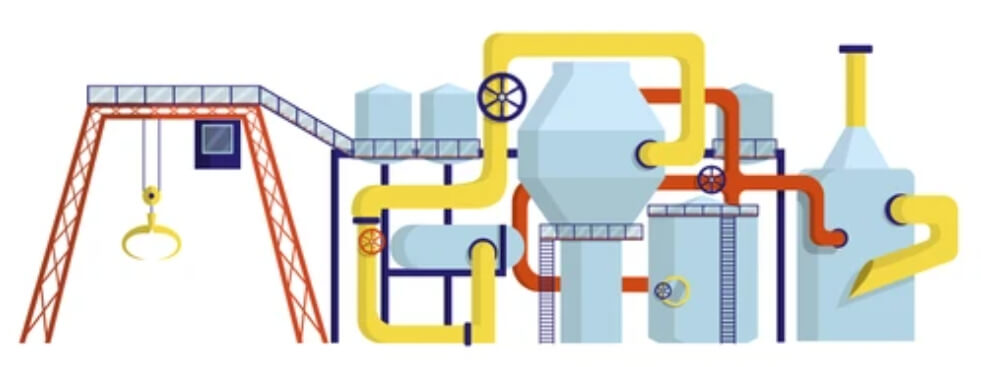
Imagine you are working on a food processing application that requires monitoring the pressure of a corrosive cleaning solution. In this case, a flush diaphragm ceramic pressure sensor would be the more appropriate choice. The seamless, flush interface of the sensor’s ceramic diaphragm would prevent any buildup or clogging of the cleaning solution, ensuring reliable and consistent pressure measurements.
Additionally, the enhanced media compatibility of the flush diaphragm design would provide superior resistance to the corrosive nature of the solution, extending the sensor’s lifespan and reducing the need for frequent maintenance or replacement.
On the other hand, if you are working on a general industrial application, such as monitoring the air pressure in a pneumatic system, a monolithic ceramic pressure sensor may be the more suitable option.
The robust, integrated construction of the monolithic sensor would provide the necessary durability and resistance to withstand the harsh industrial environment, while the lower cost and wider availability of these sensors could be advantageous for your application.
Take away
For your quick reference and help guide the selection, here are some take away we concluded when choosing between a monolithic ceramic pressure sensor and a flush diaphragm ceramic pressure sensor.
Application requirements:
- Monolithic sensors may be more suitable for general industrial applications where a robust, integrated design is preferred.
- Flush diaphragm sensors are better suited for applications where the sensor needs to interface with a process fluid or media, such as in food processing, pharmaceutical, or chemical industries, where a flush and easily cleanable surface is essential.
Pressure range:
- Both monolithic and flush diaphragm sensors can cover a wide range of pressure measurements, typically from 0-7 psi (0-50 kPa) up to 0-10,000 psi (0-69 MPa).
- However, flush diaphragm sensors tend to have a slightly higher pressure range capability compared to monolithic sensors, due to their robust construction.
Temperature range:
- Both sensor types can operate over a wide temperature range, typically from -40°C to 125°C or higher, depending on the specific design and materials used.
- However, the flush diaphragm design may offer slightly better temperature resistance and stability due to the integrated construction.
Media compatibility:
- Flush diaphragm sensors are generally more resistant to clogging, buildup, and corrosion due to the seamless, flush interface with the process media.
- Monolithic sensors may be more susceptible to media-induced issues, but can still be suitable for many industrial applications.
Size and form factor:
- Flush diaphragm sensors can offer a more compact and space-saving design, as the flush interface allows for a smaller overall sensor footprint.
- Monolithic sensors may have a slightly larger form factor due to the separate construction of the diaphragm and sensing elements.
Cost and availability:
- Monolithic ceramic pressure sensors are generally more widely available and may have a lower cost compared to flush diaphragm sensors, especially for lower-end applications.
- Flush diaphragm sensors may be more expensive due to the specialized manufacturing process and design complexity.
Wrap up
In summary, when choosing between a monolithic ceramic pressure sensor and a flush diaphragm ceramic pressure sensor, consider the specific application requirements, pressure and temperature ranges, media compatibility, size constraints, and cost factors to determine the most suitable option. Consult with experienced engineers or manufacturers to ensure the selected sensor meets the necessary performance and reliability requirements for your application.
Datasheet Download
- Download Datasheet: ESS502 Flush Diaphragm Ceramic Sensor Cell
- Download Datasheet: ESS501 Monolithic Ceramic Sensor Cell

